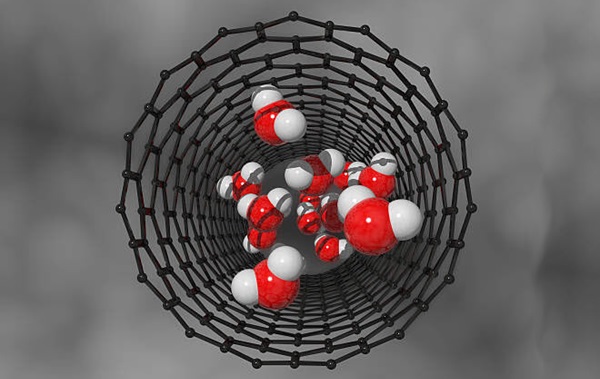Preliminary Studies on the Use of Sawdust and Peanut Shell Powder as Adsorbents for Phosphorus Removal from Water
Downloads
Downloads
Puri, Avinash, and Manoj Kumar. "A Review of Permissible Limits of Drinking Water.” Indian Journal of Occupational and Environmental Medicine 16, no. 1 (2012): 40. doi:10.4103/0019-5278.99696.
Government of Western Australia (GWA) (2005) "Nitrogen and Phosphorus Cycles”. River Science. 4: 41-8.
Shock, Clinton C., Kathy Pratt, and M. E. Station. "Phosphorus effects on surface water quality and phosphorus TMDL development." In Western nutrient management conference, vol. 5, no. 21, p. 1. 2003.
Gray, N. F. "An introduction for environmental scientists and engineers." Water Technology p (2000).
Ramakrishnaiah, C. R. "Vismitha (2012) Removal of Phosphate from Waste Water Using Low-Cost Adsorbents." International Journal of Engineering Inventions 1, no. 7: 44-50.
Sunil, B.M., and Saifiya Faziludeen. "Removal of Hexavalent Chromium Cr (VI) by Adsorption in Blended Lateritic Soil.” Advances in Environmental Research 4, no. 3 (September 25, 2015): 197–210. doi:10.12989/aer.2015.4.3.197.
Patil Mansing, R., and P. D. Raut. "Removal of phosphorus from sewage effluent by adsorption on Laterite." International Journal of Engineering Research & Technology (IJERT) (2013): 2278-0181.
Rout, Prangya Ranjan, Puspendu Bhunia, and Rajesh Roshan Dash. "A Mechanistic Approach to Evaluate the Effectiveness of Red Soil as a Natural Adsorbent for Phosphate Removal from Wastewater.” Desalination and Water Treatment 54, no. 2 (January 24, 2014): 358–373. doi:10.1080/19443994.2014.881752.
Jeffrey Yang, Y., Roy C. Haught, and James A. Goodrich. "Real-Time Contaminant Detection and Classification in a Drinking Water Pipe Using Conventional Water Quality Sensors: Techniques and Experimental Results.” Journal of Environmental Management 90, no. 8 (June 2009): 2494–2506. doi:10.1016/j.jenvman.2009.01.021.
Freundlich, H. M. F. "Over the adsorption in solution." J. Phys. Chem 57, no. 385471 (1906): 1100-1107.
Langmuir, Irving. "Adsorption of gases by solids." J. Am. Chem. Soc 38, no. 10 (1916): 2267.
Xiang, Heng, Chaoxiang Liu, Ruiling Pan, Yun Han, and Jing Cao. "Magnetite for Phosphorus Removal in Low Concentration Phosphorus-Contained Water Body.” Advances in Environmental Research 3, no. 2 (June 25, 2014): 163–172. doi:10.12989/aer.2014.3.2.163.
Gautam, Ravindra Kumar, Sushmita Banerjee, Pavan Kumar Gautam, and M. C. Chattopadhyaya. "Remediation technologies for phosphate removal from wastewater: an overview." Adv. Environ. Res 36 (2014): 177-200.
Eaton, AD., Clesceri L.S., Rice E.W., Greenberg A.E., Franson M.H. Eds.,”Standard Methods for the Examination of Water and Wastewater: 21st ed.”; American Public Health Association: Washington, DC, Water Environment Federation: Alexandria, VA, and American Water Works Association: Denver, CO, (2005).
Mohammed, Wadood T., and Sarmad A. Rashid. "Phosphorus Removal from Wastewater Using Oven-Dried Alum Sludge.” International Journal of Chemical Engineering 2012 (2012): 1–11. doi:10.1155/2012/125296.
Ragheb, Safaa M. "Phosphate Removal from Aqueous Solution Using Slag and Fly Ash.” HBRC Journal 9, no. 3 (December 2013): 270–275. doi:10.1016/j.hbrcj.2013.08.005.
Baraka, A. M., Marwa M. El-Tayieb, M. El Shafai, and Nouran Yussri Mohamed. "Sorptive removal of phosphate from wastewater using activated red mud." Aust. J. Basic Appl. Sci 6 (2012): 500-510.
Ranjbar, Ali, and Najmeh Mahjouri. "Development of an Efficient Surrogate Model Based on Aquifer Dimensions to Prevent Seawater Intrusion in Anisotropic Coastal Aquifers, Case Study: The Qom Aquifer in Iran.” Environmental Earth Sciences 77, no. 11 (June 2018). doi:10.1007/s12665-018-7592-2.
Yuan, Ye, Fuxing Sun, Hao Ren, Xiaofei Jing, Wei Wang, Heping Ma, Huijun Zhao, and Guangshan Zhu. "Targeted Synthesis of a Porous Aromatic Framework with a High Adsorption Capacity for Organic Molecules.” Journal of Materials Chemistry 21, no. 35 (2011): 13498. doi:10.1039/c1jm11998b.
Al-Anber, Mohammed A. "Thermodynamics approach in the adsorption of heavy metals." In Thermodynamics-Interaction Studies-Solids, Liquids and Gases. IntechOpen, 2011. ISBN: 978-953-307-563-1.
WANG, Junling, Yajun ZHANG, Cuimin FENG, Junqi LI, and Guibai LI. "Adsorption Capacity for Phosphorus Comparison Among Activated Alumina, Silica Sand and Anthracite Coal.” Journal of Water Resource and Protection 01, no. 04 (2009): 260–264. doi:10.4236/jwarp.2009.14031.
Ansari R., Zanjanchi MA., Mohammadkhah A., Mosayebzadeh Z. "Removal of basic dyes from textile wastewaters using sawdust”, 7th National Conference on Textile Engineering, Rasht, Iran, (2009).
- This work (including HTML and PDF Files) is licensed under a Creative Commons Attribution 4.0 International License.




















